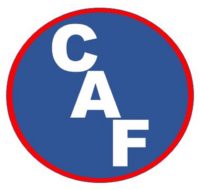Why on the basic “Let’s Make CAFS” page are we using specific numbers like:
- 1-3/4″ Hose
- 15/16″ Smooth Bore Nozzle
- 100′ minimum
- .3% solution
- 95 gpm
- 2/1 mix ratio
- 100 psi
These numbers come from years of field testing, and are a good starting place to learn CAF……
1-3/4″ Hose – this is the NFPA standard used for structure firefighting with hand lines. Other hose sizes will be discussed in the advanced topics.
15/16″ Smooth Bore Tip Nozzle with shut off butt. Since CAF is made before it reaches the end of the hose, a nozzle and shut are not really required for CAF, except that the high energy in CAF makes the hose very difficult to hold on to. A quick shut off at the hose end is also a very practical idea for the nozzle operator. CAF nozzle reaction is approximately three (3) times that of water.
100′ of Hose – the agitation discussed in Making Basic Foam happens automatically in the hose and is the result of the concentrate/water/air mix scrubbing against the hose surface. A minimum of 100′ is needed for adequate scrubbing of the bubbles.
.3% is the amount of concentrate added to the water – basically 1/3 gal of concentrate for every 100 gallons of water. Water and air do not mix. It takes concentrate mixed in to the water to allow air to mix and make bubbles. To little concentrate, and the air won’t mix. Too much concentrate, and you are wasting concentrate and $$dollars.
95 gpm – this is the minimum flow amount required by NFPA for entering a structure fire. Both concentrate/water (solution) and air must fit into the hose. 120 gpm in the hose precludes air from entering and mixing with the solution. At 95 gpm, there is enough space left in the hose for approximately 40-45 cfm of air. This provides the 2/1 mix ratio of 2 gal of water (solution) to 1 cf air.

2/1 Mix Ratio – discussed above under 95 gpm. – 2 gal of concentrate/water (solution) to each cu ft of air. This ratio provides adequate bubbles for rapid heat absorption.
100 psi – a good starting pressure. It is adequate to prevent loss of flow due to hose kinks, and an adequate pressure for 1-2 firefighters to handle the nozzle. For training purposes, CompressedAirFoam.com recommends always using two firefighters on the nozzle as the CAF nozzle reaction is almost 3 times the normal reaction for water at the same flow and pressure. If the pressure is higher than 100 psi, the nozzle becomes more difficult to handle.
Again, these numbers come from years of field testing and are the recommended numbers for starting to learn CAF operations. These and other numbers will be discussed later in advanced topics.



























